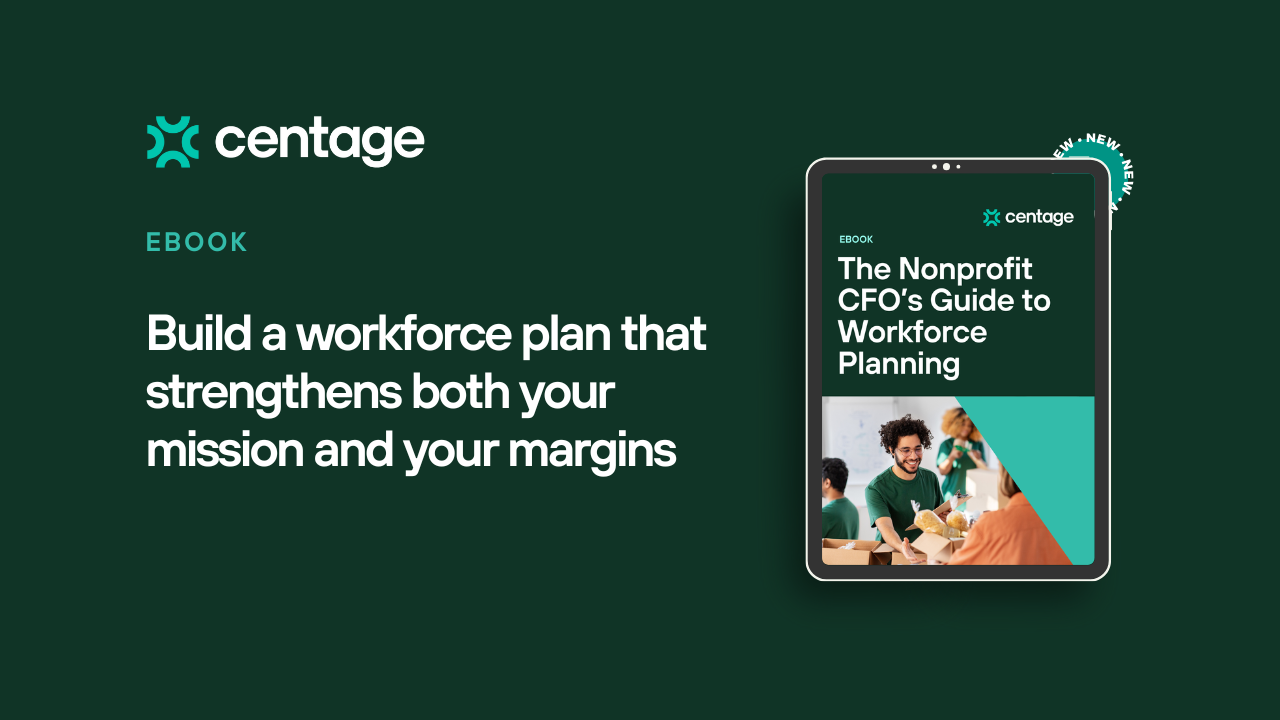Modern FP&A for Workforce Plans - Critical Operations
Workforce planning is important to meeting your organization’s strategic vision, but it’s something that many consider a kind of fortune telling. In reality, it’s more science than art, and should be a critical component of management’s operational planning – especially during uncertain times.While workforce expenses have always monopolized the largest part of a company’s budget, companies still continue to cope with the lingering impact of the pandemic and dramatic changes to the workforce and workforce landscape, as well as with new concerns of inflation, recession, softening demand, and higher cost of capital. So today, workforce planning has never been more challenging to manage as these factors add pressure to effectively executing workforce planning and budgeting.
Workforce Planning: What It Is, What It Isn’t
Strategic workforce planning doesn’t require a crystal ball or a magic wand. But it does require an understanding of what it is, and what it isn’t, to be successful.Workforce planning is different from annual resource planning. Historically companies would spend part of their annual business budget planning cycle forecasting what resources they would need for the next year. This process was much like fortune telling, expecting leaders to guess at where their industry would be in 4, 5, or even 12 months.By comparison, strategic workforce planning is an iterative process that occurs all year long. Instead of planning and budgeting for specific resource growth and needs for the entire business budget cycle, plans are reviewed and updated throughout the year.Also, it’s not uncommon for annual resource planning to occur in a vacuum. Managers and directors look at the kind of work in front of them and what their teams have previously done with little understanding of what they will need in the future. Strategic resource planning, however, strives to align resource needs with overall organizational goals.
Understanding Workforce Planning
Understanding how workforce planning is different makes it easier to grasp what needs to be understood about an organization. Research done by the Human Capital Institute found that 69% of organizations reported strategic workforce planning as being a high-priority, but only 35% are confident in their planning process. Getting workforce planning right means wrapping your head around a few key items.
- Understand the organization’s strategic objectives for at least the next 12 months: Workforce planning is about aligning HR activities, including hiring, benefits assessments, and salary expectations, with the strategic goals of the entire organization.
- Define where you make money – and who does it: Knowing what parts of the company are profitable, and what roles are required to keep those parts of the business running, is crucial to maintaining current revenue streams.
- Use data to estimate what your workforce will look like in the next 2-3 years: This part requires a little guesswork, but it should all be based on data. Knowing what roles you’ll need to maintain the profitable parts of your business, what your organization’s strategic plans are, and what your workforce will look like – how many people are retiring? Do you have skill gaps? – will make the estimates you develop based solidly in fact.
- Leverage tools that are flexible: Because there is some estimation inherent in the process, and because the business world changes quickly, you need workforce planning software that allows you to run through scenarios and change budgets and plans easily.
How to Get Started Modernizing Your Process
Here are three key tips to modernize your workforce planning process to empower you and your team to make fast, confident decisions regarding your evolving workforce and business landscape.
1. Get Detailed With Personnel Planning
Details, Details, Details! – Workforce planning is complex and increasingly so as the business landscape and requirements for how and where employees work continue to evolve. To better manage this large budget item, it’s important to capture detailed insight to guide more strategic and thoughtful decisions. With a myriad of related expenses from salaries, hourly, overtime, taxes, 401(k) contributions, insurance, holiday pay, and sick pay, among many others, the more built-in logic you can apply, the more accurate your budget will be. To get this detailed visibility you need a modern FP&A solution that is capable of manipulating the data by a wide variety of subsegments based on your company’s unique needs and objectives. For example, your company may have a small workforce so budgeting for payroll by lump sum may work best or blocking by seasonal employees, pay grade or departments will deliver the granular level of detail needed to guide effective personnel planning decision making for your organization. And, by empowering your team with a deep level of insight into your workforce expense forecast, you can also better track performance to accurately plan and identify instances when changes are necessary to meet your business goals.Being able to drill down into specific datasets will reveal an unprecedented level of detail and prove to be incredibly beneficial as this “new normal” presents continued challenges for finance departments across industries.
2. Data Driven Insights Are Key to Strategic Workforce Planning and Forecasting
Detailed workforce plans are built on data driven insights, fueled by a wide array of datasets. Integrating rich and robust data from your company’s existing CRM, sales and/or HR platforms will help inform a more accurate and valuable personnel/workforce plan. For example, Professional Employer Organizations platforms capture a huge array of data on a per person basis. This data can quickly and easily be utilized to prepare a much more detailed budget. Meanwhile, Salesforce supports a wide array of metrics that have a direct impact on revenue which may be entered or imported into your budget – metrics such as deal sizes, geo-location, type of product, sales cycle, terms and discounts required to get the deals and revenue size of customers, to name just a few. Your finance team can use this data to monitor performance, predict future performance, and plan their personnel needs accordingly.By strategically integrating data from across your, you are better positioned to feel more confident in the budget and assertive in assumptions.
3. Retire the Spreadsheet
The pandemic and the months after exposed the shortcomings of many traditional business processes and budgeting and planning are no exception. With a historical reliance on dated, siloed tools, many finance professionals found themselves scrambling to effectively build their budget and plan – especially when faced with evolving workforce dynamics.Needless to say, there has never been a more pressing time to kick spreadsheets to the curb. Today, modern, integrated, and intelligent solutions are no longer a nice to have, but essential for long term success.Payroll is the largest expenditure for most organizations and one of the most complex areas of the budget because it must include numerous expenses from contract, part-time and seasonal workers to overtime, premium time and shift differentials to new hires starting mid-month, and so on. This level of complexity will only increase as hybrid/remote workforce options evolve.Excel is inept at managing such expenses and to do so effectively, requires the finance team to knit multiple worksheets together. Not to mention, effective collaboration among peers is stunted by the static nature of this legacy tool. With minimal built-in security to control access, required error prone, manual data entry and limited options to input insights from multiple data sets, it’s never been clearer – spreadsheets are unfit to manage your largest and most complex budget item.
Seamless Workforce Planning and Budgeting
Modern, cloud-based planning tools automate mundane, time consuming and error prone processes, help to plan for workforce expenses more accurately and efficiently, and enable seamless collaboration across your team. Automating the process allows your finance team to better control expenses across different operational centers, shifts and products, adjust payroll numbers for high turnover departments, and even budget at an individual employee level to see the cash flow implications of each employee’s taxes and benefits throughout the year. And by relying on dynamic cloud-based tools, your team can work anywhere, anytime, making it possible to effectively support a remote workforce.Despite the challenges of conducting business today, effective workforce planning is within reach. It starts with an acknowledgement that the most complex portion of your budget requires keen attention to detail, deep integrations with existing datasets across your organization and end to end automation to ensure accurate and timely results and essential collaboration. Modernizing this complex and consuming budget item will help you better manage workforce expenses, support company growth and effectively budget and plan for an evolving workforce.
Keep reading...
Interviews, tips, guides, industry best practices, and news.


